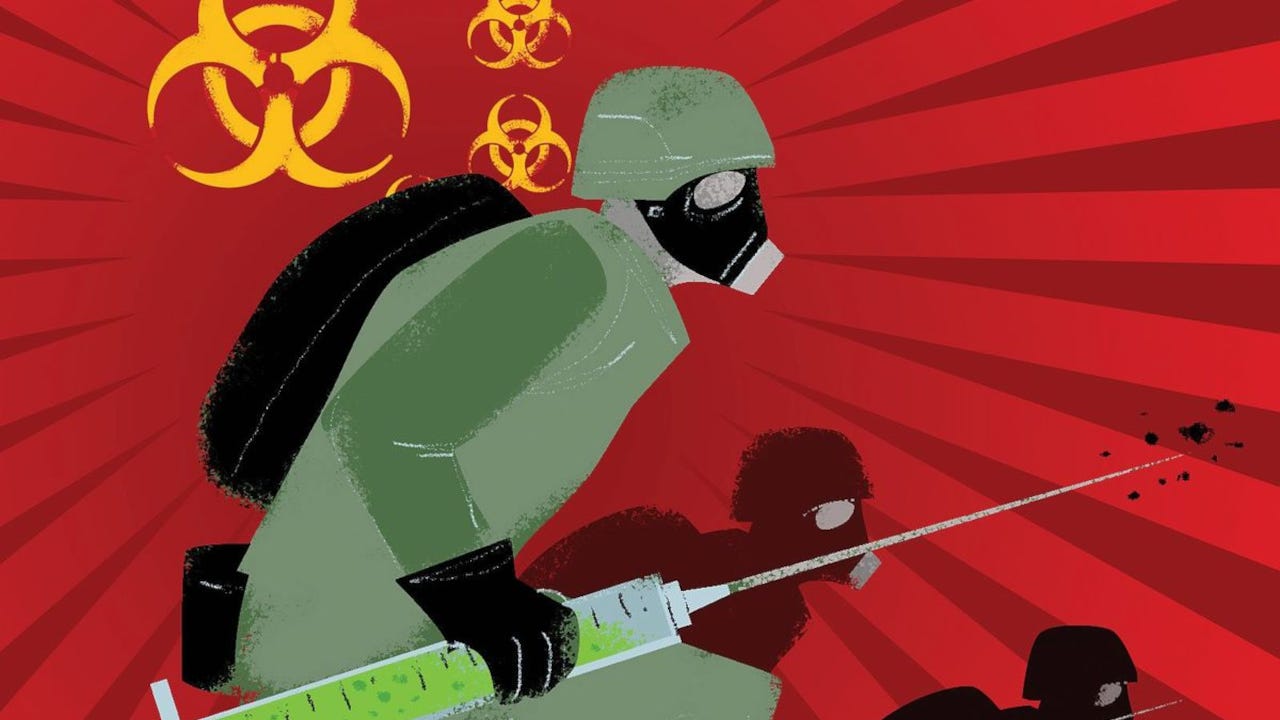And just like that, fears of China preparing a biological weapon to attack the United States were validated, when US Customs and Border Protection agents detained two Chinese nationals—and researchers at the University of Michigan—attempting to smuggle a deadly fungus into the US.
Yunqing Jian, 33, and Zunyong Liu, 34, citizens of the People’s Republic of China, were charged in a criminal complaint with conspiracy, smuggling goods into the United States, false statements, and visa fraud, announced United States Attorney Jerome F. Gorgon, Jr.
Gorgon was joined in the announcement by Special Agent in Charge Cheyvoryea Gibson, Federal Bureau of Investigation, Detroit Division and Marty C. Raybon, Director of Field Operations, U.S. Customs and Border Protection.
The FBI arrested Jian in connection with allegations related to Jian’s and Liu’s smuggling into America a fungus called Fusarium graminearum, which scientific literature classifies as a potential agroterrorism weapon. This noxious fungus causes “head blight,” a disease of wheat, barley, maize, and rice, and is responsible for billions of dollars in economic losses worldwide each year. Fusarium graminearum’s toxins cause vomiting, liver damage, and reproductive defects in humans and livestock.
The couple are reported as having claimed they intended to use the Fusarium graminearum samples for “research”.
Liu initially said he didn't know what the materials were and that someone must have put them in his bag, according to the court filing. He later said he accidentally put them in there and, after further questioning, acknowledged the materials were different strains of the pathogen.
According to the affidavit, Liu said he planned to clone the different strains on the filter paper and make more samples if the experiments on the reddish plant material failed. It indicated that he said he hid the samples in his backpack because he knew there were restrictions on the importation of the materials. He said he would have free access to the U-M lab on some days, the filing continued, and Jian would give him access to the lab to conduct the research.
Such statements are on their face absolute hogwash and horse hockey. There are established protocols and procedures for the safe handling of biological materials within a research laboratory1, and any researcher conducting legitimate research at the University of Michigan or any other research facility would be required to receive training in those protocols. Suffice it to say those protocols do not allow for dangerous pathogens to be transported in plastic baggies stuffed in a person’s carry-on luggage.
Based on the official statement of the University of Michigan, Jian and Liu were not sanctioned to be conducting any research involving the smuggled fungus samples.
"We strongly condemn any actions that seek to cause harm, threaten national security or undermine the university's critical public mission. It is important to note that the university has received no funding from the Chinese government in relation to research conducted by the accused individuals. We have and will continue to cooperate with federal law enforcement in its ongoing investigation and prosecution."
It should be noted that two Chinese nationals smuggling a deadly pathogen through a US airport is not, by itself, absolute proof that Beijing has been planning a bioterrorist attack on the United States. The possibility that Jian and Liu are simply the latest example of biologists going off the rails and playing god with a potential plague cannot be completely dismissed.
It should also be noted that Jian’s devices apparently contained numerous texts and other communications asserting her loyalty to China—which is to say to the Chinese Communist Party. To call the incident “pretty damn suspicious is an understatement.
How can anyone hope to “trust the science” about anything when time and again scientists prove themselves to be completely untrustworthy?
Burnett, LouAnn C et al. “Biosafety: guidelines for working with pathogenic and infectious microorganisms.” Current protocols in microbiology vol. Chapter 1,1 (2009): Unit 1A.1. doi:10.1002/9780471729259.mc01a01s13




Pair that possibility with the so far unexplained loss of up to 70% of commercial bees. Some bee keepers here in Texas have lost 90%. They can’t recover from that.
Very disturbing. Top-level U.S. people need to act on this. Are there more of these pathogens being smuggled in elsewhere? Is there some kind of coordinated attack going on? This needs to be determined quickly!